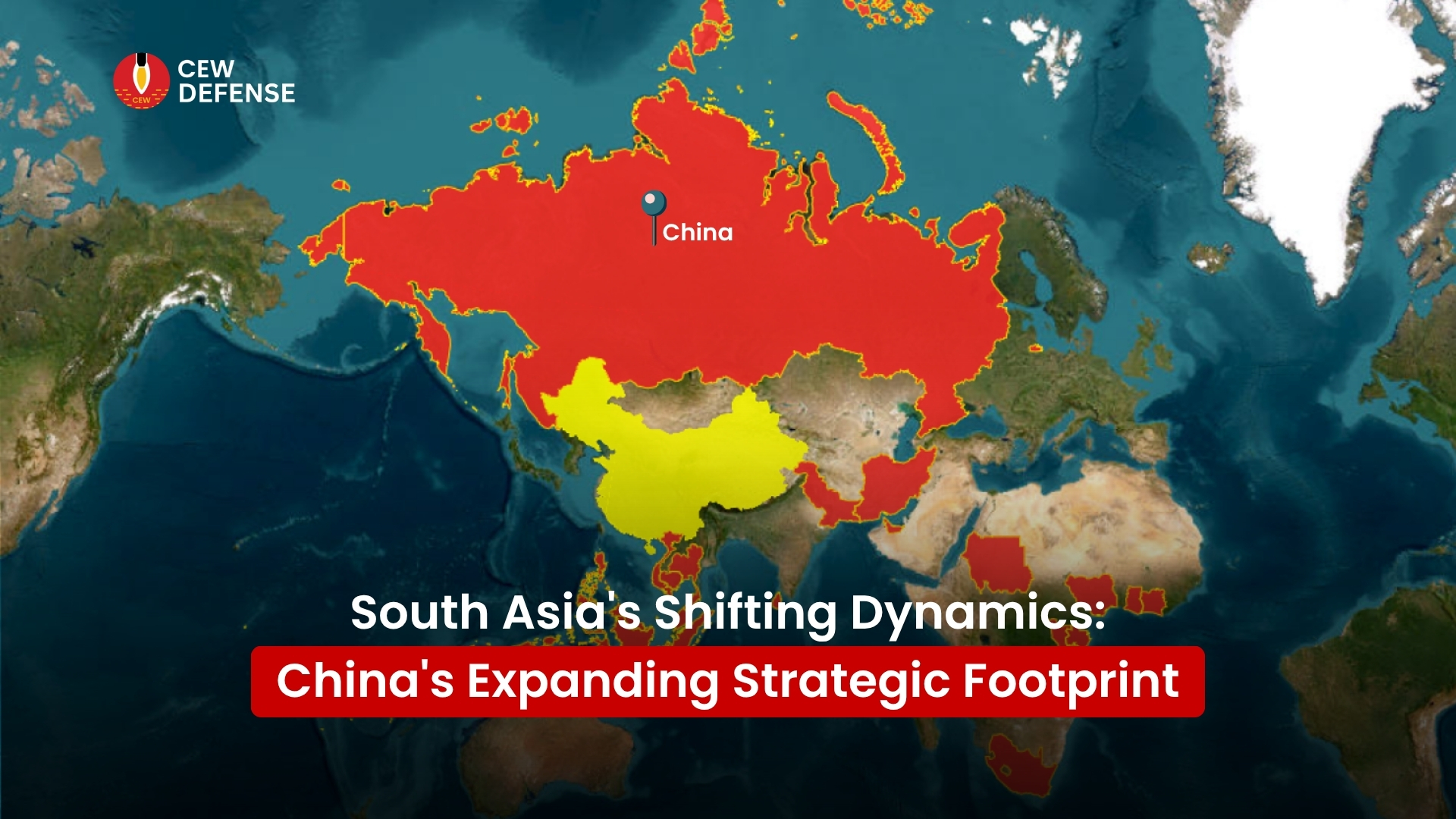South Asia, a region of over 1.8 billion people, is becoming a critical theater for geopolitical competition, especially between China and India. As China’s Belt and Road Initiative (BRI) and the China-Pakistan Economic Corridor (CPEC) reshape the region’s economic and political contours, understanding this strategic shift is crucial. From maritime routes to border flashpoints, China’s rising influence is transforming alliances, trade, and power dynamics in one of the world’s most volatile regions.
Understanding China’s strategic footprint in South Asia is essential to grasp the shifting geopolitical and economic landscape of the region.
What Is China’s Strategic Interest in South Asia?
China’s engagement with South Asia is not accidental. This growing strategic footprint underscores China’s broader ambitions to reshape regional alliances and trade routes
- Secure vital sea routes via the Indian Ocean
- Counterbalance India’s regional dominance
- Expand economic corridors like the BRI and CPEC
- Establish influence in strategically located states like Nepal, Bangladesh, and Sri Lanka
Key Drivers of China’s Strategy in South Asia
1. Belt and Road Initiative (BRI)
Launched in 2013, BRI aims to link Asia, Europe, and Africa through infrastructure and trade. South Asia is a major BRI node:
- Pakistan: CPEC links western China to Gwadar Port on the Arabian Sea
- Sri Lanka: China operates Hambantota Port under a long-term lease
- Nepal and Bangladesh: Investments in energy, roads, and rail infrastructure
2. China-Pakistan Economic Corridor (CPEC)
CPEC is a flagship BRI project worth over $60 billion. It enhances:
- China’s maritime access
- Pakistan’s infrastructure
- Beijing’s strategic footprint near India and the Middle East
3. Military and Security Engagement
- Arms exports and joint military drills, especially with Pakistan
- Surveillance systems and maritime infrastructure in the Indian Ocean
- Growing presence near disputed borders, for example, Ladakh
4. Soft Power and Diplomatic Leverage
China wields influence through:
- Development loans
- Cultural exchange programs
- Diplomatic backing in regional forums
India-China Rivalry: Strategic and Military Dimensions
India views China’s actions as encirclement. In response, India is:
- Expanding infrastructure in border areas
- Deepening defense ties via the Quad (with the U.S., Japan, and Australia)
- Boosting maritime presence in the Indian Ocean
This growing India-China rivalry defines today’s South Asian balance of power.
The Role of Other Global Powers
- United States: Countering China’s rise through the Indo-Pacific strategy
- Japan and Australia: Supporting India in regional balancing
- Russia: Playing both sides via defense exports and diplomatic ties
The result is a multi-layered rivalry reshaping Asia’s future.
Challenges and Risks
Risks for South Asian Nations
- Debt dependency from Chinese loans
- Erosion of sovereignty
- Domestic instability triggered by foreign investments
Regional Risks
- Escalation at India-China border
- Tensions in maritime chokepoints
- Greater alignment with opposing global blocs
Opportunities Amid Strategic Competition
Despite risks, China’s presence has yielded:
- Improved infrastructure and connectivity
- Increased access to finance and energy
- Expanded regional trade networks
If managed well, this dynamic could benefit many nations but only with strong diplomacy and diversified partnerships.
Future Outlook: Will South Asia Tilt Towards China?
South Asia is unlikely to fully pivot toward China. Instead, expect:
- Selective cooperation: Accepting Chinese investment while hedging through other alliances
- India’s active counterbalancing: Militarily, economically, and diplomatically
- Smaller nations leveraging both powers for their own gain
In short, multipolarity will define South Asia, with China’s role growing but contested.
Conclusion
China’s growing strategic presence in South Asia through the BRI, CPEC, military ties, and diplomacy is redefining regional geopolitics. The India-China rivalry adds tension, while smaller nations navigate this changing landscape to extract economic and strategic benefits. China’s strategic footprint in South Asia continues to expand through infrastructure projects, military ties, and diplomatic efforts, influencing the future balance of power. Understanding this evolving equation is essential for anticipating the future of South Asia’s peace, prosperity, and power balance.






